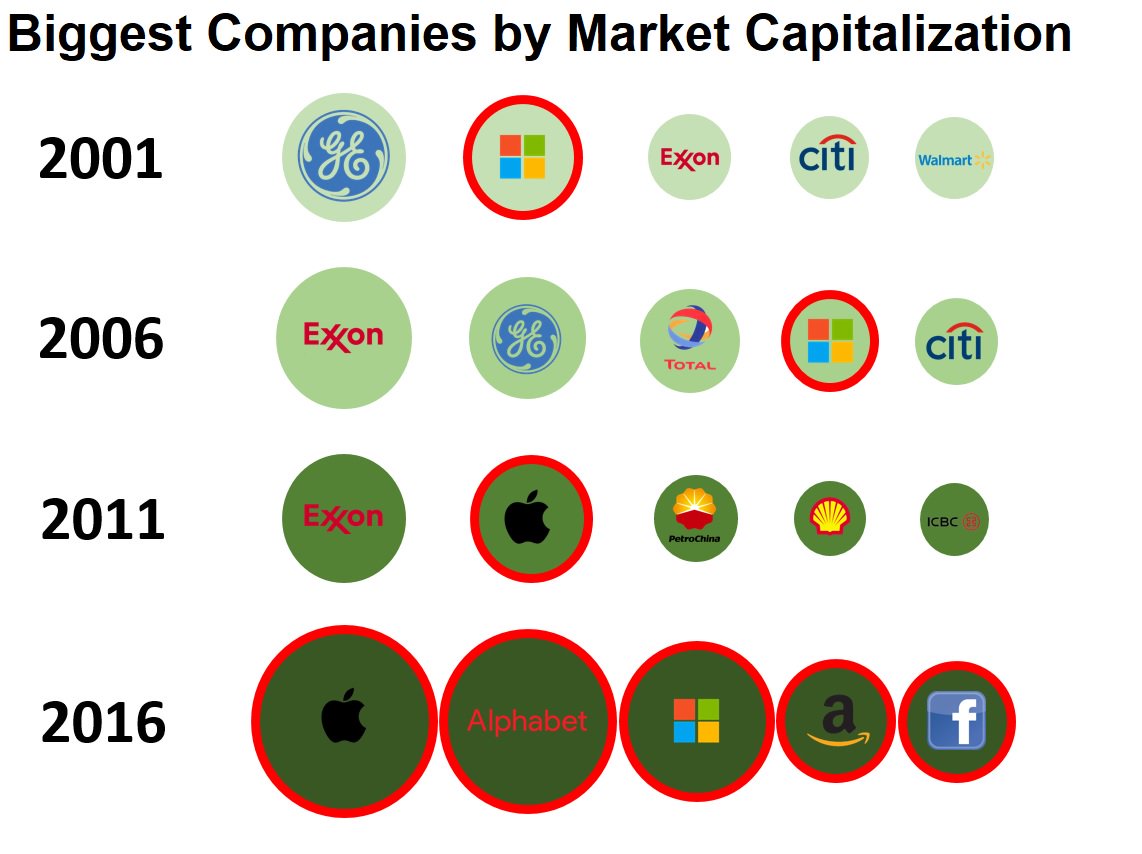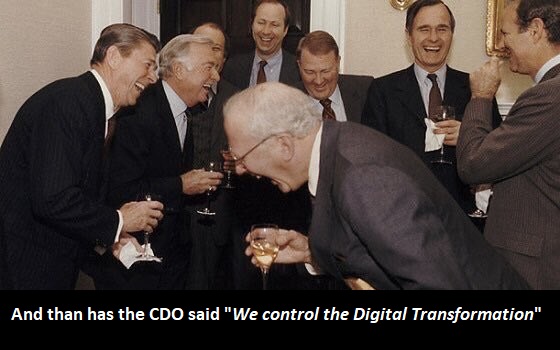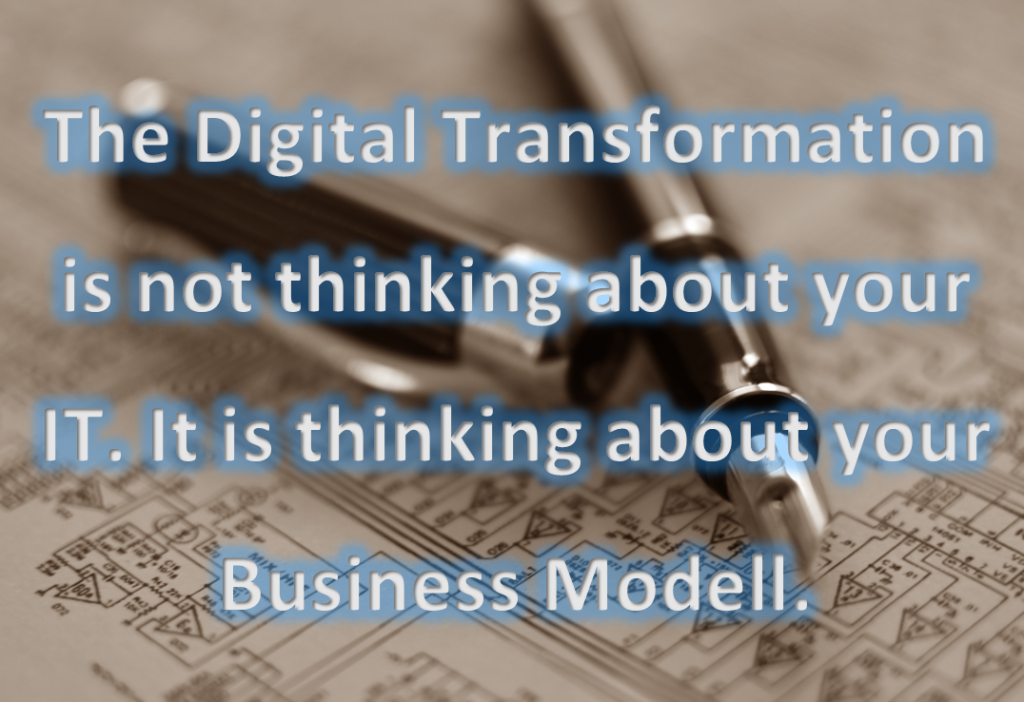Schlagwort: digital transformation
Added value of Digitaltransformation
Today I stumbled across a tweet by Christian Müller which I found very exciting:
Executive, female, late 50s: You: “The whole digital world, where is there still value added?” Me: “What do you mean by added value?” You: “Well, produce something that can be touched.” – That, too, is a subjective reality in times of digitalization.
(Tweet by @CMueller80)
Does digitalization bring added value?
Does digitalization bring added value?
I can understand the thoughts in the first step: The biggest “winners” of digitization to date are AirBnB or Uber, for example. However, it is precisely such companies that have taken existing business processes and generated added value for the customer with smart applications. The process itself is the same, but exactly these new market participants are participating and taking margins.
In my opinion, however, these success stories are only the tip of the iceberg and do not symbolize the actual upheavals associated with digitization:

Digitisation is accompanied by a number of new technologies which not only affect the end customer but also enter production. Here are a few examples
IoT: Internet of Things: This is about networking all kinds of things. This includes not only everyday objects, but also machines and shelves. Logistics can thus be optimized considerably. In production, maintenance can be improved.
Big Data and AI: Networked with the point before, a lot of data can be collected, but also analyzed. Techniques such as neurological networks help to process the data and draw conclusions from it.
3D Printing: 3D printing can also be mentioned in the context of digitization. It still has the charm of a gimmick for nerds. However, the technology is developing rapidly. There are many conceivable areas of application in production, up to “Just in Time Printing”, i.e. the time-accurate production of components. This technology has so much potential that production could again become more attractive in high-price wage locations such as Germany.
What is reflected in the tweet is the perception. The best-known companies do not produce anything, but only use familiar business processes. However, these best-known examples are not representative of what digitization means for companies. There are also many possibilities in production that are not always so well known.
It is highly recommended for every company to deal with digitization: So not just apps, but: Where can we use new technologies and how can we use it?
How to handle toxic Leaders
Intro
The Digitisation or Digital Disruption (What exactly does that mean now?) requires a rethinking of management structures. New ideas need creativity. And in order to do this, employees must be given more of them. But that also means letting go and turning away from micromanagement. For many executives, this means a change, and some of them will fail.
How to handle “toxic” Leaders
On Twitter I once asked: How should you deal with toxic executives: The micromanaging choleric man who spreads fear and terror among his co-workers. The answer I received from different quarters was clear: Disposal. But could this the right solution?
With the same implicitness as NewWork and trust is propagated, I was made clear to me: Out with such people. However, most of these executives have not earned their position because they have a bad management style, but nevertheless. This means that these people have qualifications. In addition, there is the empathy paradox: the focus is on skills that have been conditioned away in the hierarchies for years. Even if the management style is to be criticized, a new way of thinking also requires new solutions.
If I want to build a new culture of trust, a bad start is to catapult out people, who have been doing a job for years: Then don’t I lead the claim ad absurdum? Trust cannot be earned by a brutal start.
First, I need to identify these toxic executives. There are various possibilities for this (employee surveys, fluctuation measurements, etc.), but often it is enough to stay in the coffee or smoking area.
The following is the interview with the toxic leader: How can I use the human being, meaningfully and without snubbing him/her: There are solutions, often in the staff area. This is something to remember: Just because there is a lack of leadership, these people almost always have excellent skills that should be used. “Disposal” is only one last option….. which should have taken place even before the organisation had been converted and transistioned.
A credible reorganization of an organizational structure is only possible if you take all, really all, employees with you. And no one should be left behind.
Micromanagement is the dead of innovation
Innovation and Culture
At the moment we have a fast changing world in business context. New player come and displace old companies. How fast the world in economics has changed can seen by the big five in the last 20 years.

You see, the biggest five companies are all in technology settled. Only five years ago it was only one. To expand in this economic environment means, finding new products or services.
Why Micromanagement is the dead of Innovation
In many companies has established a new kind of manager: The Micromanager. That is a person, who hasn’t`t any priorities and try to control all activities of their colleagues. If this person has disciplinary responsibility, he is starting to restrict all project activities on his horizon. He wants to understand all items of work und is wanting to be reportable in all concerns.
So the colleagues aren`t able, trying new things. They always work on old modes, alway be reportable and avoid responsibilities.
Who think, this is always a problem of big companies should take a look at the German Post, DHL: They started searching a producer for an electric van for delivery. No one of the German Car Producers seem to be able, to produce such a van. So they started a StartUp with an University, the RWTH in Aachen, and now you can see their own build Vans in german streets:
 For a big Company it is not so easy, being creative. But it is possible. The most important asset are the employees: They have new ideas and are creative… if the management let them. With Micromanagement and a closely corset of reportings, they will do exactly, what is expected.
For a big Company it is not so easy, being creative. But it is possible. The most important asset are the employees: They have new ideas and are creative… if the management let them. With Micromanagement and a closely corset of reportings, they will do exactly, what is expected.
In my example of the German dhl, the problem (finding an eScooter for transport of parcels) was in the point of view: No limits, a solution must be created.
You see, such creative solutions are for big companies possible, too. But you invest in your employees and has to trust them. Controlling every step of their doing will killing all creativity. This behavior has to be lived by the Top Management. If the senior management expect all times reportings about every step in the processes, the middle management will carry on.
Trust your employees, the most of them will thank such a behavior!
We don`t need a CDO
Intro
I`ve read a great article by Julie Teigland on LinkedIn. In her main oppinion she suggested, that a CDO would help, to getting over the digital Transformation. In my opinion, a CDO can be a first step, not a solution. I have a tweet about it with similar content:

Why we don`t need a CDO
There are some Arguments for a CDO. I think, the most important one is, that a Person in an organizational structure is responsible for all the activities, to make a Company great for the future. But can one Person load such a Job? I think, the whole Management is responsible to transform a Company for the future: If there is one, the Management is saying “This is the Job of the CDO”.
To transform the whole Company, all are responsible: Board, Senior and Middle Management. The digital Transformation is not only an IT Job: Think about uber or AirBnB: These are old Business Process, but with a new Point of View: Customer Experience. The last decades, the same processes were optimized, again and again. But to have great new ideas, the way of thinking has to Change. A new Mindset in all Management hierarchies are necessary /(German Blog by Matthias Wrede). Especially the Middle Management is trained for years, making Solutions for small Problem. Thinking in new ways has to be learned again. But this is trainable, like thinking as kids (German Blog of Easy Leadership, aka Marcus Riesterer). The next years, the culture of mistakes must be changed, too: To learn the new process Thinking will be a way of trial and error. Nice to read the Roadmap by capgemini. So courageos Leaders must take the first steps. The normally employees aren`t able to Change the way of thinking. This ways can bring new ideas for creating ways of customer satisfaction. Big Data or IoT are only Tools, to improve this, not the epic Centrum of the digital Transformation.
But I don`t want to Version contradict Julie Teigland completely: A CDO is able to drive the digital Transformation in an organizational culture and bring the Spirit of New Work to all departures. So should be “Service” not only a departure anymore, it should be the Driver for new products or ideas. Think about it: The digital transformation Needs Attention by the whole Management, not only by a CDO.
Digital Transformation requires a new mindset
I read often articles about the digital transformation and changes in Leadership. But why is this topic so important? In the moment, services and products are in change. The digital transformation dominates the discussion about the future of all topics of business.
Why is this important for Leadership? For understanding take a look for some newcomer: AirBnB and Uber: This companies don`t start with great techniques, Apps or Pages: They start with an idea. The services aren`t new. The ideas were bringing a value to the customers. This both companies doesn’t start with a complete new idea. They found business processes, which weren’t optimal and used them, to dig margins.
No more bosses are needed: The age of Micromanagement has ended. New business models arises by creative employees. Managers but cannot command creativity. They have to install a framework, that supports new ideas. Failures are part of this new culture. This mindset has to be part of the common Leadership.


